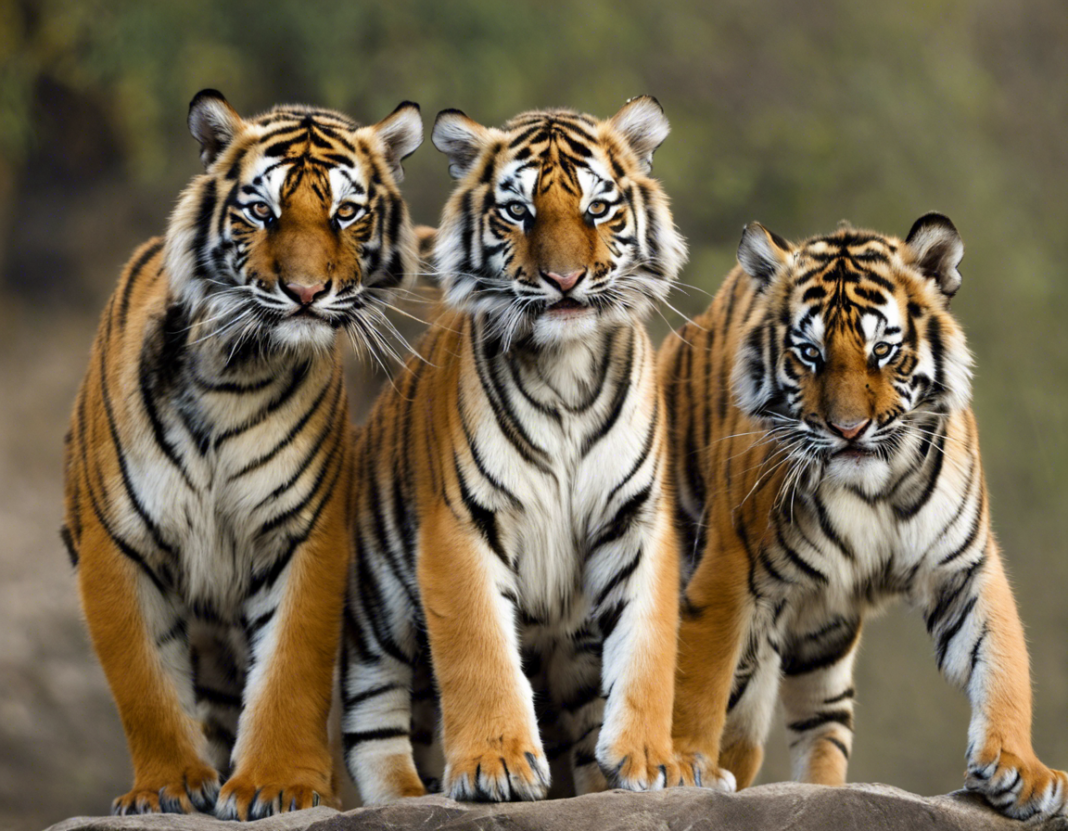Tigers are magnificent and enigmatic creatures that have captivated humans for centuries with their beauty, power, and grace. From their distinctive striped patterns to their silent but deadly hunting techniques, tigers are truly one of the most awe-inspiring animals on the planet. In this comprehensive guide, we will delve into the world of tigers, exploring their behavior, habitat, conservation status, and more.
The Majestic Tiger: A Closer Look
Overview of Tigers
Tigers, scientifically known as Panthera tigris, are the largest members of the cat family, Felidae. There are six subspecies of tigers, each with its own unique characteristics and geographic range. These subspecies are the Bengal tiger, Indochinese tiger, Siberian tiger, South China tiger, Sumatran tiger, and Malayan tiger.
Physical Characteristics
Tigers are easily recognizable by their distinctive orange coat with black stripes. The patterns of these stripes are unique to each individual tiger, much like a human fingerprint. They have powerful bodies, strong jaws, and retractable claws that help them in hunting and climbing.
Habitat
Tigers are primarily found in dense forests, grasslands, and mangrove swamps across Asia. They are solitary animals and are known for their territorial behavior, with males having larger home ranges that overlap with several female territories.
Behavior and Diet
Tigers are apex predators and primarily hunt large ungulates such as deer, wild boar, and water buffalo. They are ambush predators, relying on stealth and strength to take down their prey. Tigers are also excellent swimmers and are known to be one of the few big cats that enjoy water.
Reproduction
Female tigers reach sexual maturity between 3-4 years of age, while males mature around 4-5 years. Mating can occur throughout the year, and after a gestation period of about 3.5 months, a female tiger gives birth to a litter of 2-4 cubs. The mother takes on the sole responsibility of raising and teaching the cubs to hunt until they are old enough to fend for themselves.
Conservation Status
Tigers are classified as endangered by the International Union for Conservation of Nature (IUCN), with a global population estimated to be around 3,900 individuals. The main threats to tigers include habitat loss, poaching for their skins and body parts, and human-wildlife conflict. Conservation efforts such as the establishment of protected areas and anti-poaching initiatives are crucial for the survival of these majestic big cats.
Frequently Asked Questions (FAQs):
1. What is the difference between a tiger and a lion?
Answer: Tigers and lions are both members of the cat family but belong to different species. Tigers are generally larger and have vertical stripes on their coats, while lions are known for their social behavior and mane.
2. How fast can a tiger run?
Answer: Tigers are incredibly fast and can reach speeds of up to 40-50 miles per hour (64-80 kilometers per hour) in short bursts.
3. Are white tigers a separate species?
Answer: White tigers are not a separate species but rather a rare color variant that occurs in the Bengal tiger subspecies due to a genetic mutation.
4. How long do tigers live in the wild?
Answer: In the wild, tigers have an average lifespan of 10-15 years, though they can live up to 20-25 years in captivity.
5. What is the biggest threat to wild tigers?
Answer: The biggest threat to wild tigers is poaching for the illegal wildlife trade, driven by the demand for tiger skins, bones, and other body parts in traditional Asian medicine.
6. How many cubs does a tiger typically have?
Answer: A tiger usually gives birth to a litter of 2-4 cubs, though litter sizes can vary.
7. Do tigers roar like lions?
Answer: While lions are known for their loud roars, tigers produce a characteristic chuffing sound as a form of communication.
8. How smart are tigers compared to other animals?
Answer: Tigers are highly intelligent animals and are known for their problem-solving abilities and keen sense of observation.
9. Can tigers climb trees?
Answer: Yes, tigers are adept climbers and often use their climbing skills to escape danger, scope out prey, or rest in the branches of trees.
10. What can I do to help protect tigers?
Answer: You can support tiger conservation efforts by donating to reputable organizations, spreading awareness about the importance of tiger conservation, and avoiding products made from tiger parts.
In conclusion, tigers are not only symbols of strength and beauty but also vital components of their ecosystems. By learning more about these magnificent creatures and supporting conservation initiatives, we can work towards ensuring a future where tigers continue to roam the forests and grasslands of Asia.

